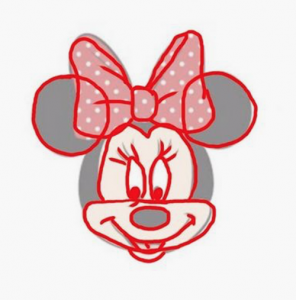Draw Cartoon Characters? Draw Sketch Journals?
 I love dabbling in the growing sketchbook journal movement, even though I tend to draw cartoon characters more than real ones. I am entranced by the sketchbook journals I see on the internet — people documenting their daily lives through vivid drawings, often executed in delicate detail and with immense creativity.
I love dabbling in the growing sketchbook journal movement, even though I tend to draw cartoon characters more than real ones. I am entranced by the sketchbook journals I see on the internet — people documenting their daily lives through vivid drawings, often executed in delicate detail and with immense creativity.
Sketch booking and cartooning diverge somewhat, because cartooning involves an additional skill.
To draw cartoon characters, you need to learn to draw and also to imagine
Drawing cartoons happens at the intersection of those two skills. Learning to draw is essential, because cartooning involves drawing what you imagine. If you can’t draw what is in front of you, you’ll be hard-pushed to draw what you can see in your mind’s eye.
However, drawing everyday objects is extremely challenging and the sketchbooks I admire are often exactly that — drawings of scenes or objects exactly as presented in front of the sketch booker.
So what if learning to draw via everyday objects is hard (or boring)?
In my opinion, the best way to start is by learning to draw existing cartoon characters. In fact, I’d recommend that you draw cartoon characters that you know extremely well, and here’s why.
Learning is a circular process. When you start you don’t have much skill so you just do your best. You make mistakes, correct those mistakes and gradually get better and better at what you are learning. So it makes senses that the faster you can recognise and correct mistakes the faster you will learn.
That is where learning cartooning by using familiar characters comes in.
I call it the Counterfeiter Conundrum
Because we can learn something from the US agencies tasked to catch counterfeiters.
In the world of counterfeit currency, those charged to find forged cash are never exposed to fake money. Rather than chasing a moving target of new and better fakes, the treasury officials spend all day in contact with real dollar bills. That way when they find a fake, their gut tips them off that ‘it doesn’t look real’ even if they can’t say exactly what’s wrong with it.
Working from a place of familiarity is excellent use of the officers’ time
Similarly, when you copy a character you’re very familiar with, you already know how that character should look. As a result, your brain quickly notices when your latest effort hasn’t turned out quite as accurate as you hoped.
It sets to work immediately figuring out how to draw it more accurately.
Like the counterfeit officials, you may struggle to pin down exactly what’s wrong with your drawing. But you’ll know that something is ‘off’. That sense of something ‘off’ happens faster with a character you know, so you’ll speed up the learning process.
But when you draw cartoon characters they aren’t ‘realistic’ anyway?
It’s true that working in ‘Cartoonland’ means artistic licence to exaggerate and change everything. As a result, it’s even more important to work with familiar characters while learning the basics of how to draw. After all, if you don’t know where you are going, how will you recognise the destination when you arrive there?
But does it really work?
In Da Vinci, we want to be sure that everyone can draw, and draw well. In the beginning we work with classic cartoon characters like Snoopy and the Pink Panther, and we use deep practice principles so the process of learning is both fun and streamlined. Not everyone is familiar with every character, but we make sure that there are plenty of references available so that they get to know them from many angles.
And sure enough year after year, it works!
Those who can already draw find themselves drawing faster and more accurately than before. For those who are absolute beginners (most participants, in other words), it’s a fun, non-threatening way to get their drawing skills under their belts.
If you want to learn to draw, but everyday objects and realistic faces don’t appeal to you?
- Haul out your favourite childhood memories of cartoon characters.
- Find your cartoon annuals and dust them off.
- Visit the children’s section of your local library again.
It’s time to put your favourite jokesters to work!
Harness the power of the Counterfeiter Conundrum and you’ll definitely learn faster and with greater ease than you expect.
